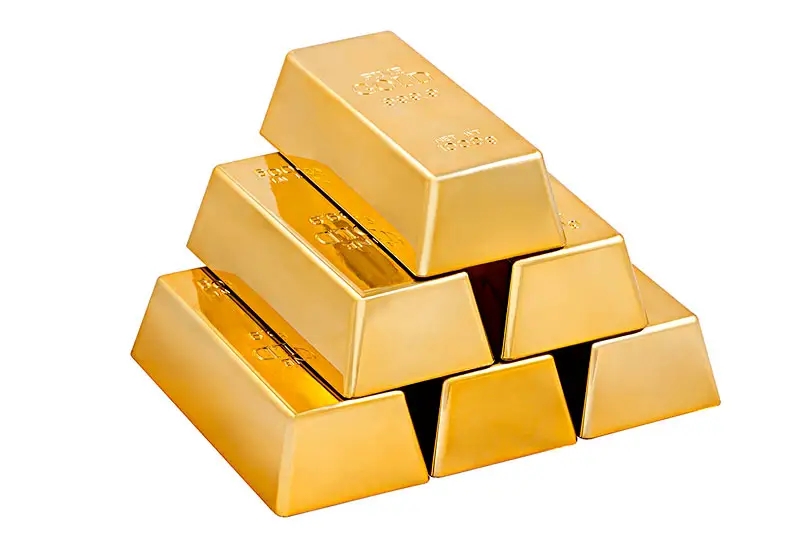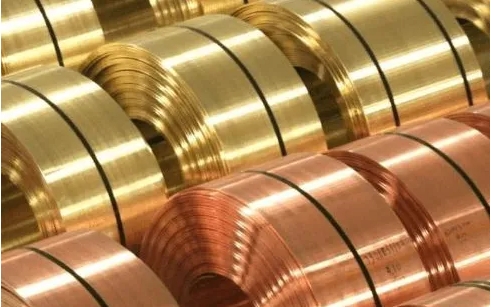The second quarter was supposed to be the traditional peak season for non-ferrous metals, but recently, there has been a general downward trend in the current prices of non-ferrous metals. Market insiders say that the decline in the peak season for non-ferrous metals is related to changes in domestic demand expectations. Currently, downstream production performance is average, and a significant recovery in demand may take longer.
According to Zhan Dapeng, Director of Nonferrous Metals Research at Everbright Futures, strong demand expectations continued at the beginning of April, with non-ferrous metals experiencing a bottoming out rebound and upward expectations. The main force of Shanghai copper rose to a maximum of 70630 yuan/ton, Shanghai zinc rose to a maximum of 22555 yuan/ton, and Shanghai aluminum rose to a maximum of 19275 yuan/ton due to concerns about power and production restrictions in Yunnan. But with the peak season in April halfway through, different voices emerged in the market. Firstly, the operating rates of sample enterprises in industries such as refined copper and recycled copper rods, aluminum processing, and galvanized sheets have continuously decreased. Although social inventory continues to deplete, the speed has slowed down significantly compared to March; Secondly, some downstream processing enterprises are struggling to sustain orders, and there has been a slight accumulation of finished product inventory compared to previous years. This means that the previous "strong expectations" have been "weakly fulfilled", or that the high production in March has overdrawn some of the demand during the peak season, making it difficult to sustain high prices.
In mid to late April, economic data from Europe and the United States were released one after another, and overseas investors' expectations of interest rate hikes also fluctuated. From the perspective of economic data and forecast probability, Europe and the United States are difficult to shake off recession expectations. However, under high inflation pressure, the interest rate hike in May may continue. Therefore, for non-ferrous metals, the overseas macro environment of 'recession+interest rate hike' does not support high prices. At the same time, with the upcoming Labor Day in China, funds are flowing out of the non-ferrous metals market in advance to avoid uncertainty risks, and a price correction is not surprising, "said Zhan Dapeng.
Specifically, in terms of copper, Li Jun, a non-ferrous metal analyst at Guangjin Futures, told Futures Daily reporters that in the first quarter of the year, 2.97 million new urban jobs were added nationwide, indicating that the economy is in the process of recovery. On the supply side, Chile's copper concentrate exports declined in March, and Peru became China's largest copper concentrate supplier. Domestic copper concentrate supply is loose, and TC is further rising; In terms of inventory, as of April 24th, the previous period's warehouse receipts decreased significantly by 8187 tons to 59813 tons. LME copper inventory increased by 2000 tons to 53875 tons. Therefore, overall, the approaching interest rate hike by the Federal Reserve in May and the increase in global copper concentrate production are unfavorable for copper prices. However, the significant decrease in inventory after the decline in copper prices indicates that there is buying support at a low level.
In fact, terminal consumption still needs to be continuously repaired, but the price correction stimulates processing enterprises to replenish inventory at low prices. State Grid's recruitment volume in April decreased month on month, and cable consumption was relatively weak. "Liu Yuxuan, a non-ferrous metal analyst at Guotai Junan Futures, said that with the price correction, some cable companies have increased their point prices, copper rod companies have seen a significant increase in orders, and finished product inventory has dropped to normal levels. Although it is currently the peak season for refrigeration production, the high inventory of raw materials in air conditioning and other enterprises has weakened the demand for copper pipes, leading to a decline in the operating rate of copper pipe enterprises. The power supply and new energy industries increased inventory of copper strips at low prices, supporting the high operating rate of copper strips.
In her opinion, although the US dollar index rebounded, the Chinese economy started well, supporting market risk sentiment. Fundamentally, the price correction stimulates processing enterprises to replenish inventory at low prices, and social inventory has fallen, which can still support prices. It is expected that copper prices will maintain an overall oscillation pattern.
In terms of tin, China's tin ore supply for the whole year of 2022 is about 143000 tons of metal, of which about 44% comes from imported tin ore, and 63% of imported tin ore comes from Myanmar, which means that more than 25% of domestic raw material supply comes from Myanmar. Liu Yuxuan analyzed that from the trend changes, the importance of importing tin ore to China's tin raw material supply has been increasing year by year. From the perspective of Myanmar itself, the long-term grade and production have both declined. This will significantly constrain China's raw material supply in the medium and long term under overseas export policies, and there will be a relatively tight situation.
During the interview, the reporter learned that the Wa State Central Economic Planning Commission released a red headed document on the 15th stating that in order to protect local mineral resources, rectify destructive and wasteful mining, companies that have not yet expired their contracts and are still mining will be given three months for follow-up work. It is expected that starting from August 1, 2023, the mine will cease all exploration, mining, processing and other operations. The release of this news has triggered market expectations of tight supply of tin concentrate, leading to a strengthening of tin prices.
Without considering the decrease in demand and other supply supplements, if Myanmar's tin mines completely cease production and suspend exports after August, it will reduce 13750 tons of tin ore, and prices may return to the bull market in 2021. If some small mines are shut down in order to regulate and regulate mining behavior, large mines will not be affected, and the impact on supply may be relatively light. After the production reduction in August, 1250 tons of metal will be reduced. At that time, tin prices may rise by 6.25%, and there is a risk of rising and falling due to the extreme situation of tin prices hitting the limit up by 12% on the same day, "said Liu Yuxuan.
Liu Yuxuan believes that further dynamic tracking will determine whether it can truly affect production and how much production capacity will be reduced. We believe that a complete shutdown is still a low probability event, but under the stimulation of news, even if the weak pattern on the demand side remains unchanged, the main driving logic of supply side contraction will continue to maintain a strong tin price. We recommend investors to remain cautious.
It is worth noting that the downstream demand for tin is currently average, and the traditional consumer electronics market is still flat. TSMC's sales for the second consecutive quarter did not meet expectations, indicating a continued weakness in global demand for electronic products. TSMC's sales in March decreased by 15% year-on-year to NT $145.4 billion, indicating that the downturn in the chip industry has not yet bottomed out. In addition, the battery industry is relatively stable, and the photovoltaic industry and automotive electronics will continue to maintain high growth rates this year, but these two parts account for a small proportion of tin consumption and have limited impact on tin prices. Therefore, it is expected that tin prices will fluctuate in the short term, "said Li Jun.




